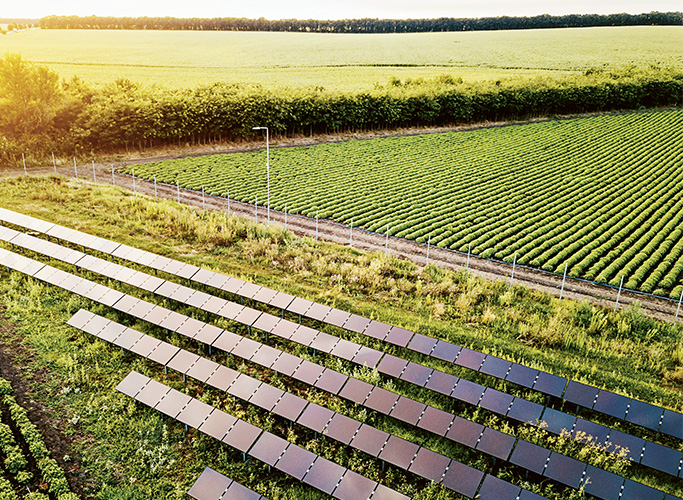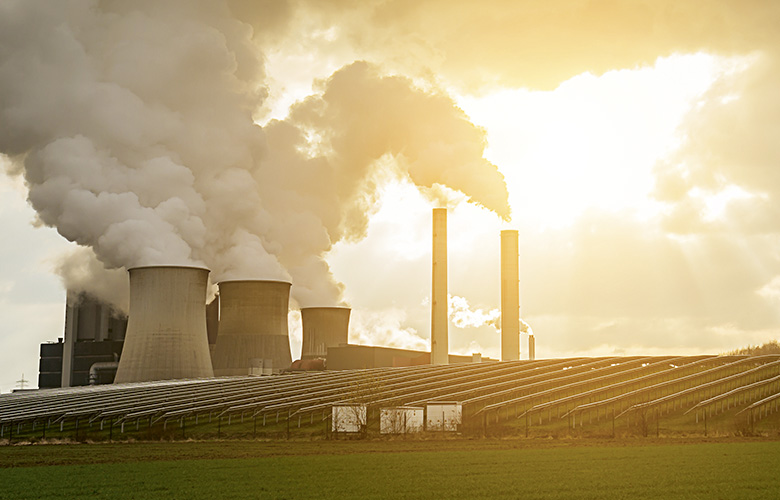“We insure, invest, operate, and share our knowledge in a way that tackles sustainability challenges and creates long-term value.”
Our Group Sustainability Strategy supports our vision of making the world more resilient.
Why sustainability matters
Sustainability is the principle of achieving economic and social development that can be maintained in the long term, without overusing precious resources. Major challenges that undermine sustainable development – such as climate change, insecure food supplies, health funding gaps, ageing infrastructure – also weaken resilience because they create new risks or aggravate existing ones, thus widening the protection gap.
Through our Group Sustainability Strategy, we seek to identify and address the challenges that threaten stable long-term development.
What sustainability means for our business
Sustainable re/insurance is a strategic, long-term approach where all activities in the re/insurance chain are carried out in a responsible and forward-looking way.
This involves managing and monitoring risks and opportunities associated with environmental, social and governance (ESG) issues. Our sustainability strategy covers both the liability and the asset side of our balance sheet. It aims to develop innovative solutions, improve business and investment performance on a risk-adjusted basis, and contributes to environmental, social and economic sustainability.
To learn more about our Group Sustainability Strategy, we invite you to have a look at our 2019 Sustainability Report.
Climate change was a primary focus of our sustainability efforts in 2019. Here we present highlights across four of our sustainability topics that are key to tackling this challenge.
Mitigating climate risk
~4 000
wind and solar farms insured
The effects of climate change and global warming are already evident and shaking up the risk landscape. We continue to evolve our way of doing business towards a low-carbon economy in line with the Paris Agreement, the landmark agreement to combat climate change.

In 2019, worldwide weather-related losses totaled USD 135 billion, of which 62% were uninsured. In cooperation with our partners, we continued to develop re/insurance solutions covering risks such as hurricanes, droughts, floods and extreme rainfall.
In recent years, we have become an important market player to cover the risks of offshore wind farms. In total, we were providing risk cover to over 4 000 wind and solar projects at the end of 2019. Notable new developments included insuring the first-ever offshore wind farm in France.
Investing responsibly
~100%
assets considering ESG criteria
We co-founded the UN-convened Net-Zero Asset Owner Alliance, thus committing to having a net-zero greenhouse gas investment portfolio by 2050. This marks an important milestone in our efforts to accelerate the transition to a low-carbon economy.
With climate change as a core topic in our Responsible Investing strategy, we are transforming risk into opportunity by:
- Allocating 13% of our infrastructure investments to renewable energy
- Avoiding investments in companies where we see a high risk of stranded assets, by continuously reducing the carbon footprint of our investment portfolio
- Targeting to increase our green, social and sustainability bond mandate to at least USD 4 billion by the end of 2024
Considering ESG criteria along our investment process, thereby improving risk-adjusted returns, stands at the centre of our strategy.
Shifting the large institutional asset base towards sustainable investments would mark a big step forward in making the world more resilient: we interact with policymakers and other market participants to transition towards more sustainable financial markets.
Managing sustainability risks
over300
dialogue engagements with clients on thermal coal in 2019
We have made a public commitment to reach net-zero emissions in our re/insurance business by 2050. In line with this, we have taken further steps towards decarbonising our own business model.

Through the Sustainable Business Risk Framework, we continued to implement our thermal coal policy in our underwriting and had engagements with over 300 clients across the globe in 2019.
Via the CRO Forum, which is attended by Chief Risk Officers of major insurance companies, we worked with peers to develop a robust carbon footprinting methodology that will support our carbon steering and address the risks embedded in our re/insurance business.
By signing the UN Global Compact Business Ambition for 1.5°C, we committed to reaching net-zero emissions also on the liability side of our business.
Liability side (re/insurance): committed to reach net-zero emissions by 2050
Reducing our carbon footprint
100
carbon removal certificates purchased in the world’s first auction for negative emissions
We place emphasis on tackling the carbon footprint of our own operations. CO2 emissions and energy consumption reductions are priorities across the Group. In 2019, we committed to reach net-zero emissions in our operations by 2030.
Over the years, we have set ambitious targets for our operations. In 2003, we were one of the first global companies to become fully greenhouse neutral. In 2014, we pledged to cover 100% of our power consumption from renewable sources by 2020, reaching a share of 92% by 2019.
In 2019, we went a step further and committed to achieve net-zero emissions in our operations by 2030. The concept of net-zero requires that for every tonne of CO2 emitted, another tonne needs to be removed from the atmosphere and stored permanently.
We want to achieve this goal by imposing a stringent internal carbon levy on all our air travel. This will create an incentive to fly less and at the same time generate the funds needed to purchase carbon removal certificates.
Until the nascent market for these certificates is fully developed – also supported through our early engagement – surplus funds from the levy can be used for other sustainability projects across the company.